
Pancoast Syndrome
Pancoast Syndrome occurs secondary to local compression of brachial plexus and sympathetic chain by superior (pulmonary) sulcus tumors.

Pancoast Syndrome occurs secondary to local compression of brachial plexus and sympathetic chain by superior (pulmonary) sulcus tumors.

Wernicke encephalopathy is an acute, reversible encephalopathy caused by thiamine deficiency, classically presenting with ophthalmoplegia, ataxia, and confusion.
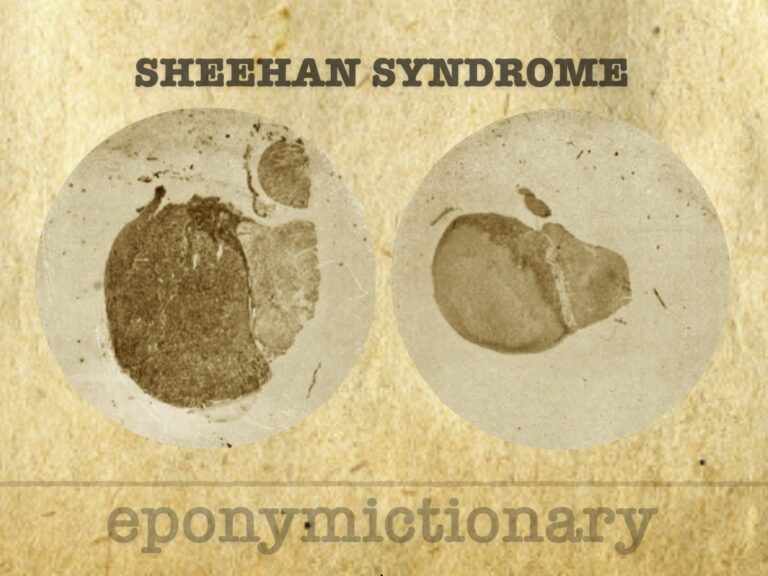
Postpartum hypopituitarism following ischaemic necrosis of the anterior pituitary gland. Pituitary necrosis occurs secondary to hypophyseal portal vessel thrombosis following significant postpartum haemorrhage, hypovolemia, and shock.

corneal ring at the level of Descemet’s membrane, caused by copper deposition in the cornea. It is a cardinal sign of Wilson’s disease (hepatolenticular degeneration)

Parry-Romberg syndrome: progressive facial hemiatrophy usually involving the soft tissues of one side of the face. Parry (1825) Romberg (1846)

Peutz-Jeghers-syndrome: A Syndrome gastrointestinal polyposis characterized by specific melanin pigmentations of the skin and mucous membranes
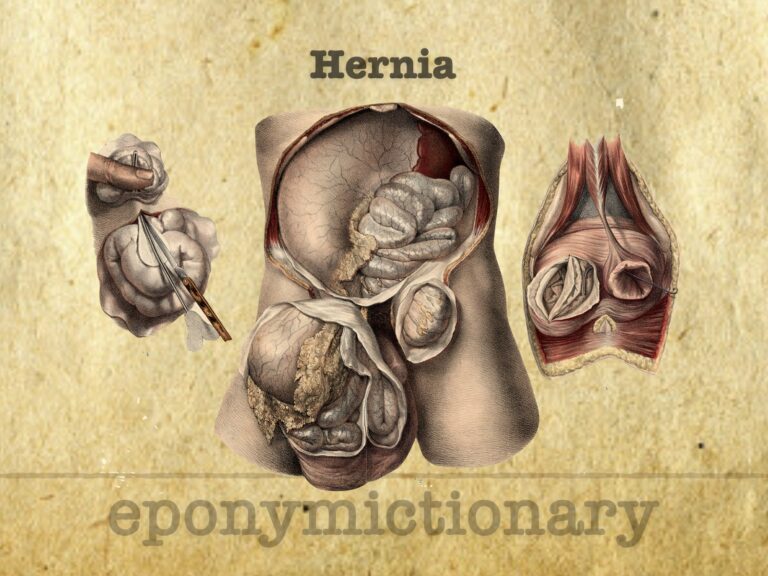
Eponymous hernias: clear definition, etymology, and a quick guide to types—Amyand, de Garengeot, Littre, Richter, Spigelian, Bochdalek, Morgagni.

Lower brachial plexus injury, with consequent weakness and wasting of the C8–T1 musculature. Augusta Klumpke (1859-1927)
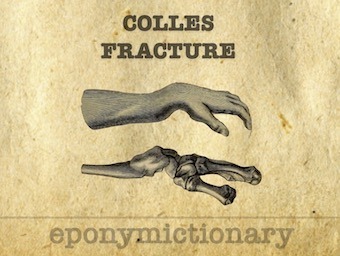
Colles fracture: Extra-articular fracture of the distal radius with dorsal angulation of the distal fragment. Abraham Colles (1814)
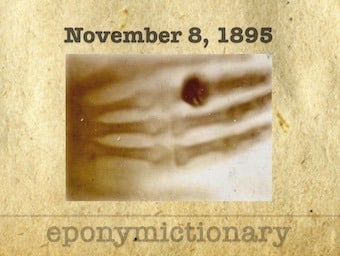
On November 8, 1895 Wilhelm Röntgen, chair of physics at Würzburg, noted an unusual phenomenon, that would change the world of medicine

Bryant’s sign: Scrotal ecchymosis associated with ruptured abdominal aortic aneurysm (AAA) first described in 1903 by John Henry Bryant (1867-1906)
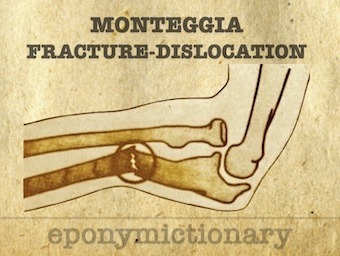
Monteggia fracture. Fracture of the proximal or middle third of the ulna with associated radial head dislocation/instability. GB Monteggia 1812